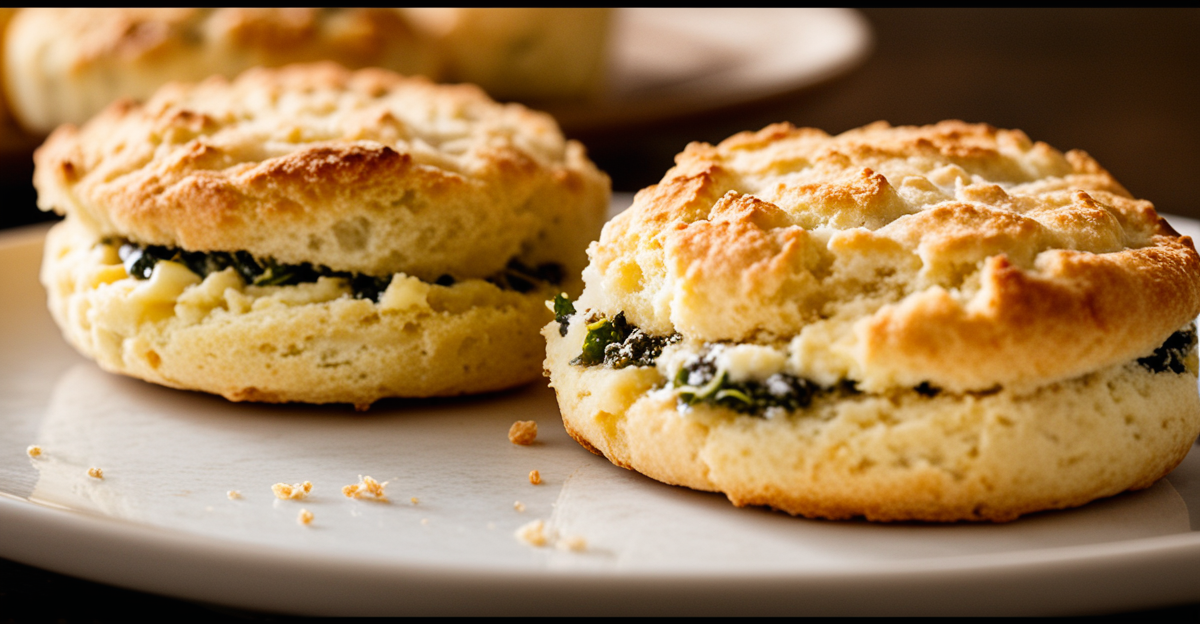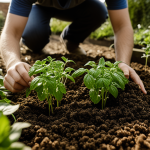Essential techniques for perfect English scones
Creating perfect English scones relies heavily on cold ingredients and careful mixing. Cold butter, ideally cubed and chilled, ensures the scone dough produces a flaky, tender crumb. When butter melts prematurely, it can lead to dense scones rather than light and airy ones. Proper mixing means combining dry and wet ingredients just enough to bind them without overworking. Over-mixing develops gluten, making scones tough instead of soft.
Achieving the right dough texture is crucial. The dough should be slightly sticky but firm enough to shape easily. This balance helps in trapping air pockets during baking, contributing to the desired rise. Authentic scone methods encourage gentle folding rather than aggressive kneading.
Also to see : What Are the Traditional British Dishes That Define UK Cuisine?
Oven temperature profoundly impacts the rise and bake of scones. High heat, usually around 220°C (425°F), creates steam quickly, pushing the scones upwards for an optimal rise and golden crust. Baking time should be just enough to cook through without drying out. Close attention to these factors ensures consistent, delightfully fluffy scones that delight every time.
Essential techniques for perfect English scones
Mastering English scone baking techniques starts with the critical role of cold ingredients and careful handling. Using cold butter, chilled and cubed, slows melting during mixing, which helps create the flaky layers classic to authentic scone methods. Warm butter blends too quickly, resulting in heavier scones lacking lightness.
This might interest you : How Can British Cuisine Inspire Modern Culinary Trends?
Achieving the optimum dough texture means aiming for a slightly sticky yet manageable consistency that traps steam within air pockets during baking. How do you know when the dough is correctly mixed? The answer lies in gentle folding rather than vigorous kneading. Overworking develops gluten, toughening the scone crumb, which is why scone tips emphasize minimal mixing.
Oven temperature plays a decisive role in rise and crust development. Baking at around 220°C (425°F) produces the ideal steam burst needed for good lift and a golden crust. Baking time should be just enough to fully cook the scones without drying them—usually between 12 to 15 minutes. These techniques combined ensure the classic tender, flaky quality that defines an authentic English scone.
Essential techniques for perfect English scones
Mastering English scone baking techniques depends on cold ingredients and gentle mixing to ensure light, flaky results. When combining your ingredients, always use butter that is chilled and cubed; this helps create pockets of air as the butter melts during baking, which is key to authentic scone methods. Mixing should be minimal—just enough to bring the dough together into a slightly sticky, cohesive mass. Overmixing activates gluten, resulting in tough scones rather than tender ones.
The right dough texture feels soft but manageable. This consistency traps steam during baking, which contributes to the rise and crumb structure. To achieve this, scone tips recommend folding the dough gently instead of kneading aggressively, preserving its delicate flakiness.
Oven temperature is critical in developing the perfect rise and crust. Baking at a high temperature, around 220°C (425°F), produces a rapid steam burst that lifts the scones and crisps the surface to a golden brown. Timing matters as well; typically, 12 to 15 minutes is sufficient to fully cook your scones without drying them out. Monitoring both temperature and baking time ensures your scones have an evenly cooked, tender crumb with a crisp finish, as authentic scone methods prescribe.
Essential techniques for perfect English scones
Cold ingredients are the cornerstone of English scone baking techniques. Using chilled butter that remains solid in the dough ensures pockets of fat stay intact, which melt during baking to create flaky layers. This is why many authentic scone methods emphasize cubing and thoroughly chilling butter before mixing.
Proper mixing directly affects texture and rise. The goal is a lightly sticky yet firm dough achieved by folding flour and butter gently with wet ingredients, avoiding vigorous mixing. This prevents gluten overdevelopment, which toughens scones, a common pitfall noted in expert scone tips. Overmixing also flattens scones by reducing trapped air and steam.
Oven temperature matters greatly. Baking scones at a high heat, around 220°C (425°F), causes rapid steam formation from the buttery dough. This steam is critical—it quickly lifts the scones, giving a light interior and golden crust, as prescribed by authentic scone methods. Timing is equally important; typically 12 to 15 minutes suffices to cook through while retaining moisture. Deviating from this can lead to dry or dense scones, highlighting how finely tuned these English scone baking techniques must be.
Essential techniques for perfect English scones
Cold ingredients lie at the heart of English scone baking techniques. Using chilled butter in small cubes creates pockets of fat that stay intact in the dough. When baked, these pockets melt, releasing steam which helps lift the dough for a tender, flaky crumb—one of the key principles in authentic scone methods. The importance of this cannot be overstated, as warmed or softened butter eliminates these steam pockets, resulting in denser scones.
Achieving the ideal dough texture requires careful mixing. Overworking the dough develops gluten, producing tough scones—a common trap highlighted in expert scone tips. The dough should be slightly sticky but hold together when gently folded, promoting an airy crumb and proper rise. Folding the dough instead of kneading is a cornerstone of these techniques, preventing gluten overdevelopment and preserving delicate layers.
Oven temperature and baking time play crucial roles. High heat, around 220°C (425°F), rapidly generates steam from the cold butter and liquid, causing scones to rise quickly and form a crisp, golden crust. Baking too long or at lower heat risks dry or flat scones. Typically, 12 to 15 minutes balances full cooking with moisture retention, aligning perfectly with time-tested authentic scone methods.







